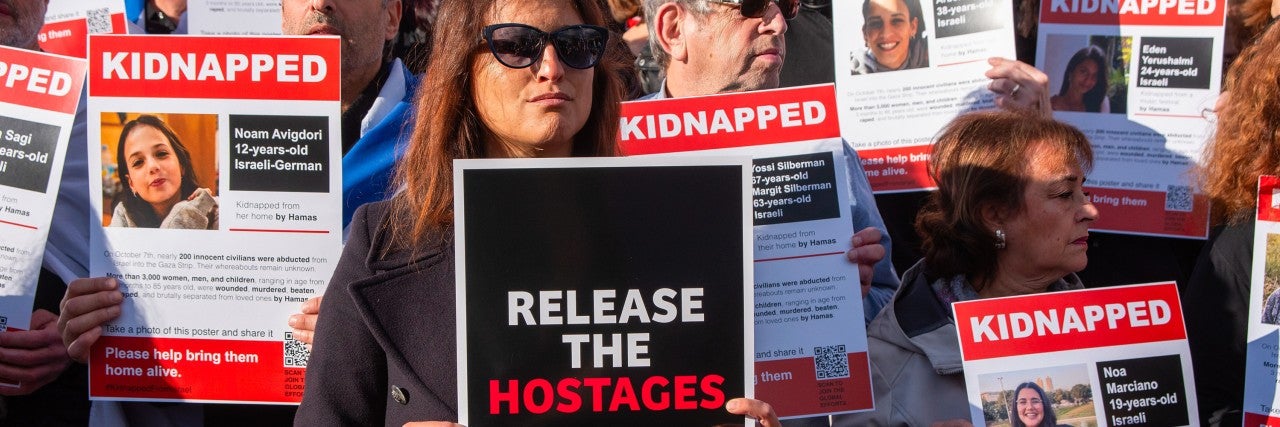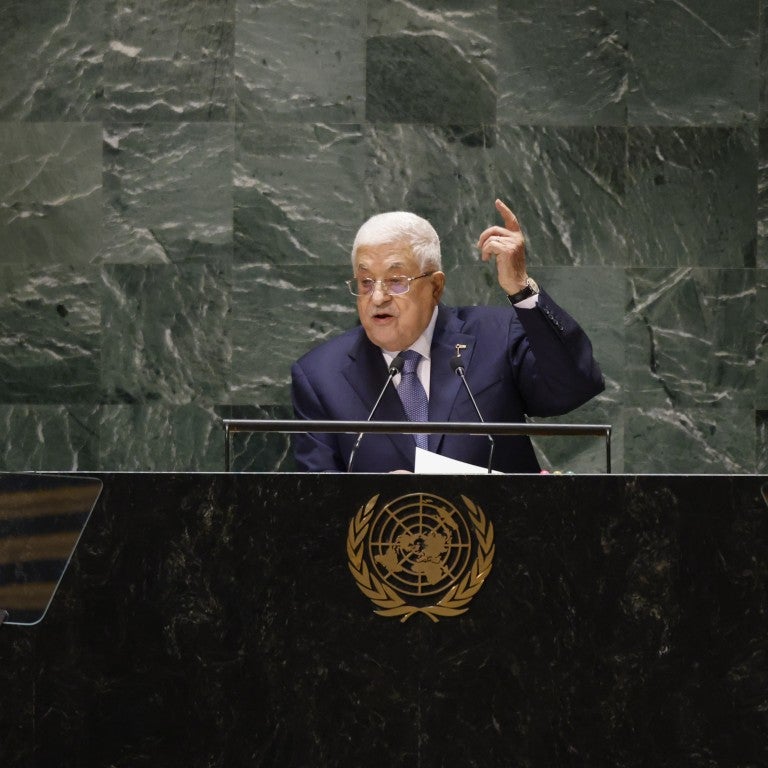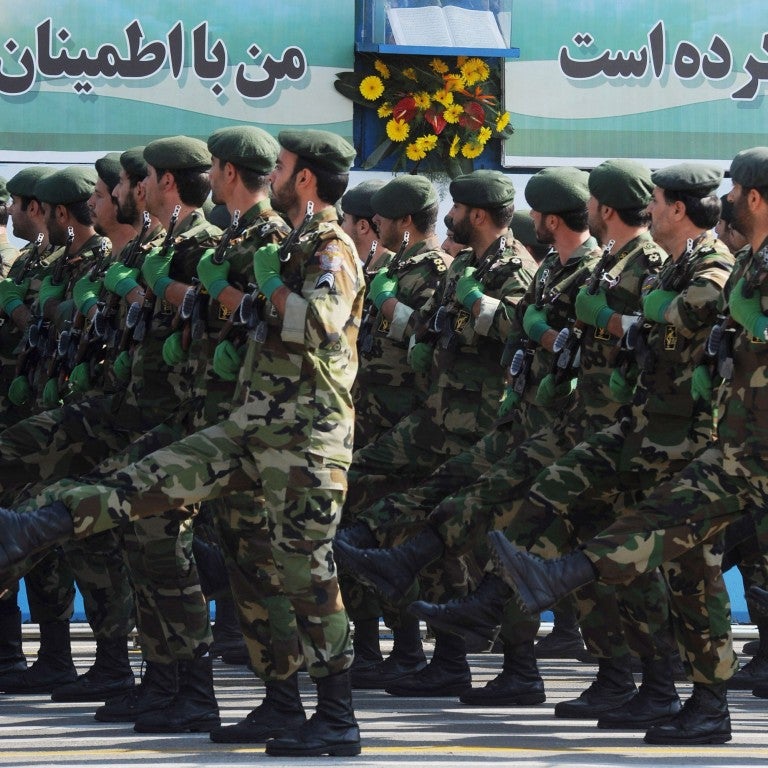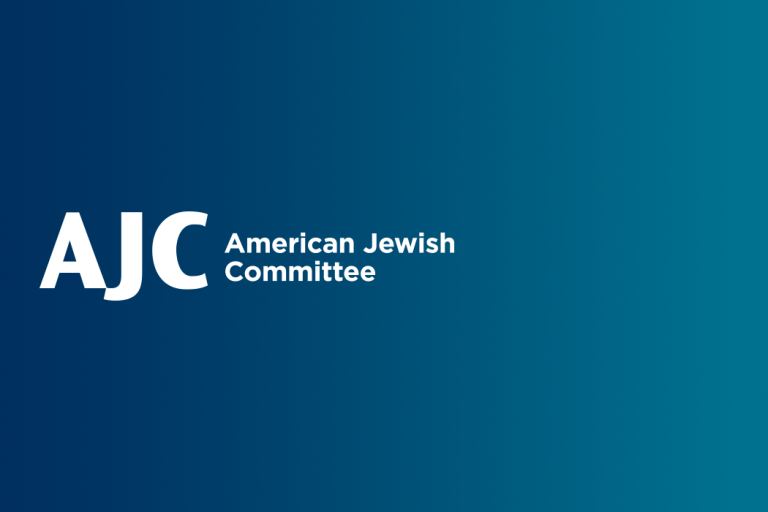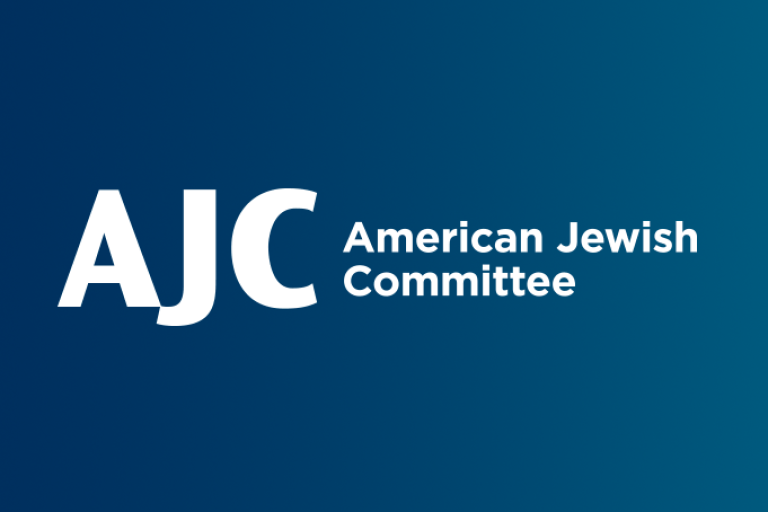February 26, 2024
The death toll of the unprovoked attack on Israel by the Iranian-backed Hamas terrorist group on October 7 continues to rise with over 1,200 Israelis killed.
While the large-scale, brutal slaughter of Israeli civilians and military personnel have been devastating, Hamas terrorists also kidnapped over 230 Israelis and other foreign nationals as hostages. The temporary ceasefire agreement in November saw 105 civilians released from Hamas captivity, including 81 Israelis, 23 Thai nationals, and one Filipino.
Here is what is known about the people taken hostage on October 7, the history of Hamas’ hostage-taking, and how Israel has responded in the past.
What is the latest on the hostages?
In the early hours of February 12, Israeli security forces successfully rescued two hostages who were being held in the southern Gazan city of Rafah. The operation was only the second known rescue of its kind since the war began - Israeli soldier Ori Mehidish was freed during a military operation in October. The two hostages, Fernando Simon Marman, 60, and Louis Har, 70, were evacuated to a hospital near Tel Aviv and were listed in good condition despite being held in captivity for 129 days.
Both men are dual Israeli-Argentinian citizens and were taken hostage from the same house in Nir Yitzhak, a kibbut near Gaza. They were taken hostage along with Clara Marman, who is Fernando's sister and Louis's partner. Clara was freed during the November 2023 ceasefire.
“Fernando and Louis, welcome home,” Prime Minister Benjamin Netanyahu said in a statement. “I salute our brave fighters for the daring action that led to their release.”
Israeli officials said that at least 31 of the 134 remaining hostages in Gaza have died since the beginning of the war — about one-fifth of the total number of captives. The IDF said that most of the dead were killed on October 7, and their families have been privately informed.
How many hostages does Hamas have in Gaza?
With the end of the ceasefire in November 2023 and the resumption of hostilities in Gaza, Israel believes that over 134 hostages remain, including two children, although the IDF has confirmed the deaths of 18 hostages due to new intelligence and findings from soldiers in Gaza.
On January 14-15, 2023, Hamas released a series of three propaganda videos featuring three hostages. In the videos, Hamas claimed that two of the hostages, Yossi Sharabi, 53, and Itai Svirsky, 38, were killed in an Israeli airstrike. However, the IDF refuted that claim, calling the accusation that they were killed by Israel a "Hamas lie." The video also included Noa Argamani, 26, who spoke about her companions' deaths and described being wounded herself.
What to know about the deal to deliver medicine to the hostages
On January 17, Israel reached an agreement with Hamas, brokered by Qatar and France, for the International Committee of the Red Cross (ICRC) to deliver medicine to the hostages held in Gaza. Many of the remaining hostages are elderly and require medication for chronic conditions. In exchange, additional humanitarian aid for Palestinian civilians will be transferred to Gaza.
The entry of medical aid into Gaza is the first agreement reached between Israel and Hamas since the week-long hostage release deal in November.
Here’s what to know about the hostage release in November 2023
An agreement between Israel and the Palestinian terror group Hamas was reached on November 21 for the release of 50 Israeli hostages, who were among the 240 people taken by the terror group during the October 7 attack on Israel. In exchange for their release, Israel would released 150 Palestinian prisoners held in Israel, and maintain a four-day pause in fighting. This pause was extended by several days, which led to the release of 108 hostages in total before hostilities resumed on December 1. The agreement was announced after weeks of negotiations that involved the United States, Egypt, and Qatar, who acted as a mediator with the Hamas terror group.
AJC Statement: AJC welcomed the announcement of an agreement brokered by the United States, with assistance from Qatar and Egypt, for the release of 50 of the hostages abducted by Hamas and other terrorists from southern Israel on October 7.
AJC is relieved that these hostages are slated to be returned home and deeply appreciates the role of President Biden and his administration, and other world partners, in securing their release.
The work to free every hostage – irrespective of age, gender, or nationality – cannot stop. The global community must continue efforts to ensure that every single hostage will be reunited with their loved ones and ensure that this humanitarian issue remains at the forefront of all global efforts in the region.
Please click here to read the full AJC statement.
First release: The first group of Israeli hostages was released on November 24, which included 13 women and children, the youngest being two years old and the oldest being 85. They were turned over by Hamas to the International Committee of the Red Cross, who transported them from Gaza into Egypt and then flown into Israel. In addition, 10 Thai nationals and one Filipino, who were also taken hostage by Hamas on October 7 were also released.
Among those released in the first group was Doron Katz Asher, a 34-year-old Israeli-German citizen, and her two daughters, Raz 4, and Aviv 2, who were taken from their grandmother’s home in Kibbutz Nir Oz. Their grandmother, Efrat Katz, was murdered by Hamas. In a tearful reunion, the family was reunited with their father, Yoni. Raz told her father, “I dreamed we were going home” to which he replied, “Now the dream came true, we’re home, that’s it.”
Second release: On November 25, the second group of hostages was released after a delay by the terror group Hamas that lasted several hours and threatened to shatter the fragile deal. Four Thai nationals were also released. The second group of 13 Israeli hostages – all women and children – included six members of an extended family from Kibbutz Be’eri, where Hamas terrorists slaughtered more than 130 people on October 7.
Among those released in the second group included Emily Hand, 9, an Israeli-Irish citizen who was at a sleepover at her friend’s house and was initially thought to be killed. She was eight when she was abducted and turned nine while in captivity. Also released was 13-year-old Hila Rotem, who said she was separated from her mother, who was taken hostage by Hamas, just days before her release. Under the terms of the agreement, no child should be separated from their mother when released.
Third release: On November 26, 14 Israelis, including the first U.S. citizen, and three Thai nationals were released by Hamas.
Among those released on November 26 was four-year-old Avigail Idan, a dual Israeli and U.S. citizen, who marked her fourth birthday while in captivity. Both her parents were murdered by Hamas during the October 7 attack. She was hiding at a neighbor’s house when she was abducted, while her father was shot and killed while protecting his family from Hamas terrorists. Her brothers, Michael, 9, and Amalya, 6, hid in a closet for 14 hours survived, and now live with their aunt and uncle.
Fourth release: On November 27, 11 Israeli hostages were released. All of the hostages were abducted from Kibbutz Nir Oz during the Hamas massacre.
Among those released are the children of Renana Gomeh, Or Yaakov, 16, and Yagil Yaakov, 12. Renana spoke to AJC's People of the Pod in October about her efforts to bring her children home. Nine Israeli children remain in Gaza after the fourth day of the truce.
The uncle of Or and Yagila Yaakov said that Hamas terrorists had branded the teenage boys using a motorcycle exhaust pipe so they could be identified if they ran away.
“They were drugged, they were treated so bad, but at least they are with us,” Yaniv Yaakov said in an event alongside Israeli Foreign Minister Eli Cohen.
Fifth release: After the truce was extended by two days, 12 hostages were released on November 28 - 10 Israelis and two Thai nationals. Of the 10 released, 8 of them were elderly women, and one teenage girl and her mother were released. Most of the hostages released were from Kibbutz Nir Oz, where nearly half of the 400 residents were murdered or abducted by Hamas terrorists on October 7. The release also came despite a violation of the truce by Hamas earlier in the day when Israeli troops in northern Gaza were targeted by Hamas explosives and gunfire.
Sixth release: On the seventh day of the truce between Israel and Hamas, the terror group released eight Israeli hostages from captivity. Two women, Mia Schem, 21, and Amit Soussana, 40, were released on the afternoon of November 30th, while six others were returned to Israel shortly before midnight.
While in captivity, Mia was in a propaganda video released by Hamas. In the video, Mia's hand appeared wounded and was being treated. Mia's aunt said that she was operated on in Gaza by a veterinarian.
“She underwent trauma. She’s thin, she’s weak,” Vivian Hadar, Mia's aunt, said to Israeli reporters. “We’re happy she’s with us. It’s really tough to see her like this,” Hadar adds.
Hamas also released a propaganda video regarding the Bibas family. The family - father Yarden, mother Shiri, and their sons Ariel, 4, and baby Kfir - were abducted on October 7. The terror group, in an unverified claim, said on November 29 that Shiri, Ariel, and Kfir had been killed during an Israeli bombardment. The video released by Hamas appeared to show Yarden Bibas alive. It is believed that Yarden has been held separately from the rest of his family.
IDF Spokesman Rear Admiral Daniel Hagari refuted the claims by Hamas.
“The Hamas terrorist organization presented harsh documentation of Yarden Bibas,” Hagari said. “Our hearts are with the entire Bibas family. We will continue to return all our captives.
“Hamas employs psychological terror against the families of the captives,” Hagari added. “Its purpose is to exert pressure, to harm our resilience.”
Kfir, who was only ten months old when he was taken captive, is the youngest hostage being held by Hamas.
Prior hostage releases:
On October 16, Hamas released its first video of a hostage, Israeli-French citizen Mia Schem. Mia was shown lying on a bed with her right arm being bandaged, while she pleaded to be returned to her family. Mia was captured by Hamas terrorists while attending the music festival where over 360 concertgoers were killed by terrorists.
On October 20, two Israeli-American hostages were released by Hamas, Judith, 59, and Natalie Raanan,17.
On October 23, two additional hostages were released, Nurit Cooper, 79, and Yocheved Lifshitz, 85. Both were abducted from their homes in Kibbutz Nir Oz. Their husbands reportedly remain in Gaza.
On October 30, Ori Magdish, an Israeli soldier who was kidnapped by Hamas on October 7, was rescued by Israeli special forces on Monday. The soldier is in good health and met with her family, according to the IDF.
Also on October 30, Hamas released a video of three hostages: Yelena Tropenov, Daniel Aloni, and Rimon Kirsht. In the video, Aloni called on Netanyahu to free them and release Palestinian prisoners. Netanyahu's office called the video "cruel Hamas-ISIS psychological warfare" and that the Israeli leader is "doing everything to bring all the hostages home."
What is Israel and the U.S. doing to release the hostages?
Hamas has demanded that Israel release some 6,000 Palestinians held in Israeli prisoners in exchange for the release of all the hostages.
Israeli and American officials have been working closely with Qatar, a key intermediary with Hamas, to negotiate the release of the hostages. According to Axios, Mossad Director David Barnea visited Qatar and met with senior officials to discuss their efforts to secure the release. The Biden administration has also been in close contact with the Qatari government to secure the release of American hostages.
Israeli Prime Minister Benjamin Netanyahu has promised to exhaust every option to bring them home.
How Many Americans and Other Foreigners Were Taken Hostage?
The level of Hamas’s brutality against Israeli civilians was unimaginable. With over 1,200 killed and thousands more injured, it was one of the deadliest terror attacks in world history. Yet Israelis were not the only victims of Hamas’s carnage, many citizens from other countries were among the dead or taken hostage.
According to U.S. President Joe Biden, 22 Americans so far are confirmed dead. An additional 20 Americans are still missing. The president promised to do everything in his power to bring these hostages home.
"I've directed my team to share intelligence and deploy additional experts from across the United States government to consult with and advise Israeli counterparts on hostage recovery efforts," Biden said.
Biden added: "Because as president, I have no higher priority than the safety of Americans being held hostage around the world," he added.
Biden has spoken with family members of some of the Americans believed to be held hostage in Gaza.
"They're going through agony, not knowing what the status of their sons and daughters, husbands wives, children," Biden.
During his visit to Israel on October 18, Biden met with some of the families of those held hostage by Hamas and reiterated that freeing the hostages remained his top priority.
On October 20, two Israeli-American hostages were released by Hamas, Judith and Natalie Raanan.
“Today, we have secured the release of two Americans taken hostage by Hamas during the horrific terrorist assault against Israel on October 7,” Biden said in a statement following their release.
“Our fellow citizens have endured a terrible ordeal these past 14 days, and I am overjoyed that they will soon be reunited with their family, who has been wracked with fear,” he says.
According to the Israeli government, 138 of the hostages have foreign passports, including 54 Thais, 15 Argentinians, 12 Germans, 12 Americans, six French, and six Russians. There is also one Chinese hostage, one Sri Lankan, two from Tanzania, and two from the Philippines.
What is the history of Hamas hostage-taking?
Hamas has a long history of extreme violence targeting Israeli civilians, including suicide bombings and rocket attacks. Hamas employs various strategies to take Israelis hostage, including cross-border raids and exploiting tunnels to infiltrate Israeli territory from Gaza. They use hostages as bargaining chips for prisoner exchanges and as propaganda tools to gain international attention. These tactics are condemned as violations of international law, and Israel typically refrains from negotiating with terrorists, opting for military or other measures to secure hostages' release.
Here are some notable past hostages taken by Hamas:
- The 1994 kidnapping of Israeli soldier Nachshon Wachsman, which ended tragically when Wachsman was killed by Hamas in a failed rescue by IDF forces
- The 2006 capture of Israeli soldier Gilad Shalit, who was held for over five years before a prisoner exchange secured his release in 2011
- The 2014 kidnapping and murder of three Israeli teenagers, Eyal Yifrach, Naftali Fraenkel, and Gilad Shaar, led to increased tensions and contributed to Operation Protective Edge in 2014.
Further, Hamas has also held the two bodies of slain Israeli soldiers - Hadar Goldin and Oron Shaul - from the 2014 Operation Protective Edge, and two Israeli citizens - Avera Mengistu and Hisham al-Sayed, who are believed to be alive.
Yet the current situation of over 200 civilians and soldiers being taken hostage is without precedent. The value of human life has been completely exploited by Hamas.
How has Israel responded in the past to Hamas hostage-taking?
The Israeli government and society place a very high value on human life, including those taken captive by terrorists. Israel has a long-standing policy of doing whatever it can to secure the release of its citizens who have been taken hostage or captured by terrorist groups. This commitment to the well-being and safety of its citizens is deeply ingrained in Israeli society and government.
The current situation of over 200 civilians and soldiers being held hostage by Hamas is without precedent in Israeli history.
In the past, Israel's response to Hamas hostage-taking incidents has included negotiations, military operations, blockades, targeted assassinations of Hamas leaders and militants, and even larger-scale military campaigns, depending on the specific circumstances and severity of the situation. Negotiations have been used to secure the release of hostages, often involving prisoner exchanges, while military operations have been employed for rescue missions, sometimes resulting in casualties. The most notable case was of Gilad Shalit in 2011, who was released in exchange for over 1,000 Palestinian prisoners in Israel.
Israel has also imposed blockades and restrictions on the Gaza Strip to weaken Hamas and conducted targeted assassinations of key Hamas figures involved in hostage-taking or terrorism.
While we, of course, do not know how this will end. We will continue to update our resources and call for the hostages to be immediately returned home.
